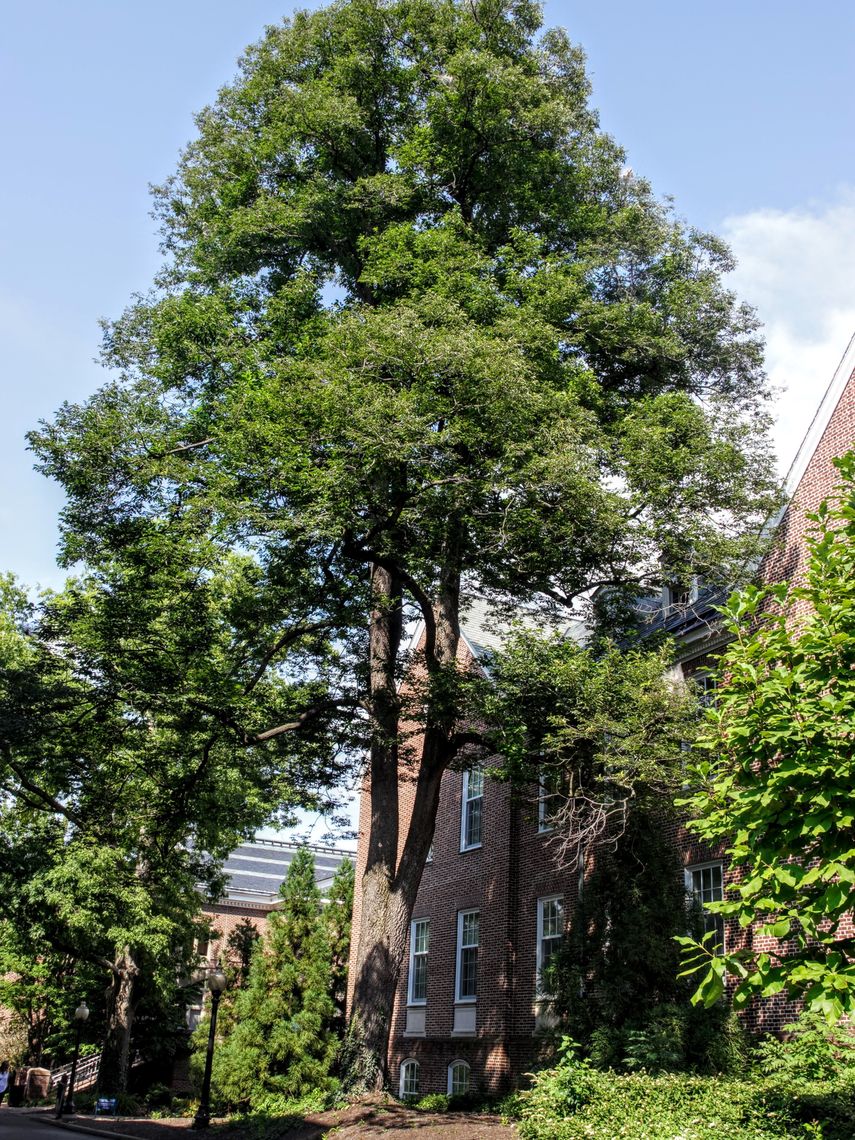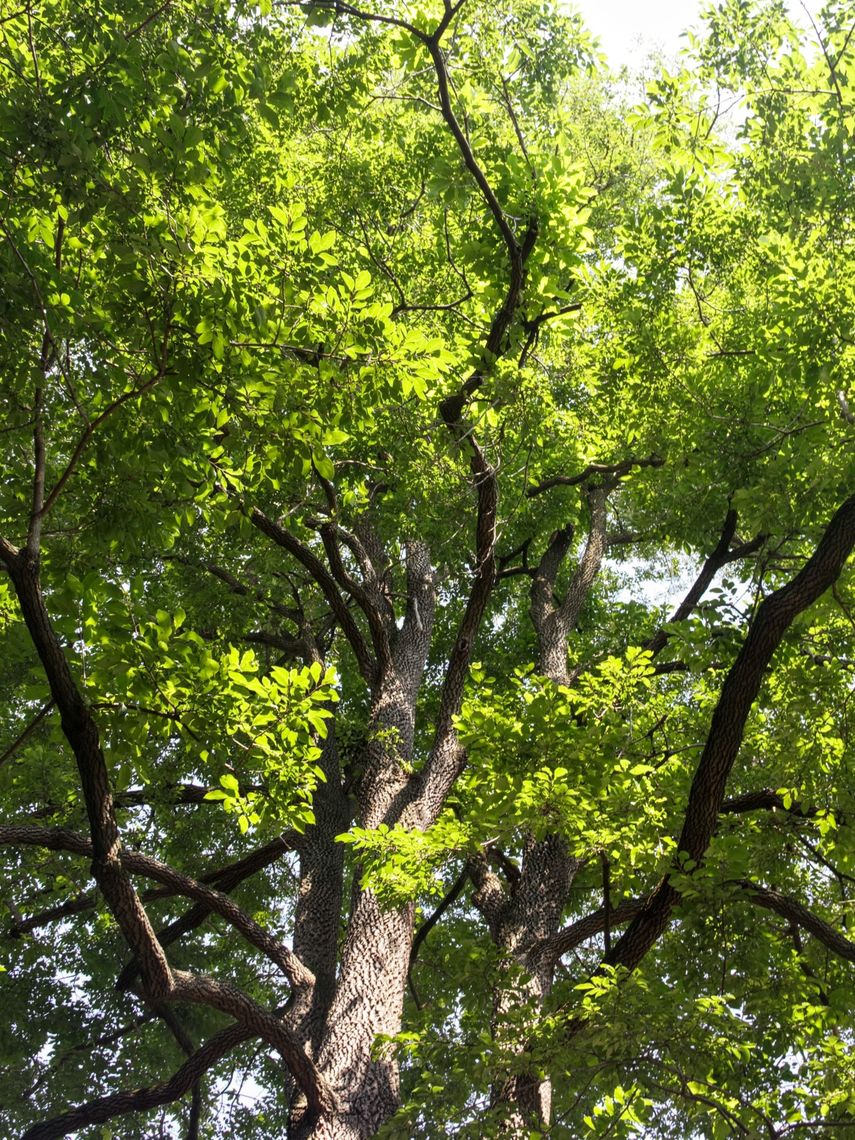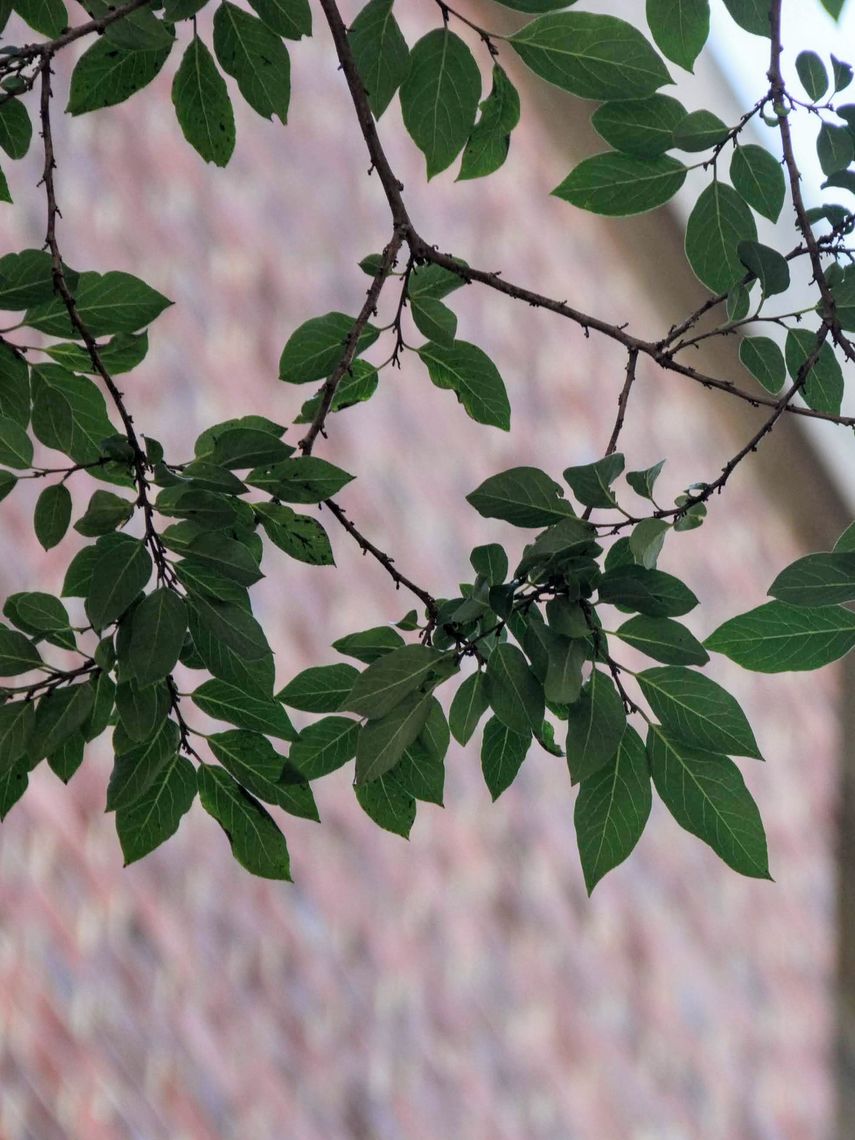American Persimmon (Diospyros virginiana)
The persimmon fruit ripens in the fall and will turn an orange or red-purple color when it is ready to eat. It is often used to make jellies, syrups, ice creams, or pies. Persimmon leaves can also be used to make teas. These leaves are dark green and oval-shaped and are occasionally pointed. This tree attracts small mammals, birds, and insect pollinators.
Family: Ebenaceae (Ebony)
Characteristics: The 2-inch to 5½-inch-long leaves are oval-shaped, occasionally pointed, and dark green. In the fall, leaves turn yellow and sometimes red-purple. In May to June, small, blueberry-shaped white flowers begin to bloom. Male flowers appear in clusters and female flowers are solitary. Male and female flowers appear on separate trees. The persimmon fruit becomes orange or red-purple when it is ripe in the fall. This fruit may persist into the winter. Bark is gray-black and broken into rectangular blocks. This tree has a pyramidal to oval-rounded shape. It grows 35-60 feet high and 20-35 feet wide.
Foliage: Deciduous (leaves lost seasonally)
Geographic Origin: Eastern and midwestern United States (native)
Cultivation Notes: Requires low maintenance. Does best in full sun to part-shade. Prefers moist and well-drained soils, but is tolerant to many different types of soils, including clay, dry, and shallow rocky soils. This tree is also tolerant to drought conditions and air pollution. Root suckers should be removed immediately. Female trees need a male pollinator to produce fruit.
Number on Campus: 1
Sources: Dirr, Morton Arboretum, Missouri Botanical Garden




